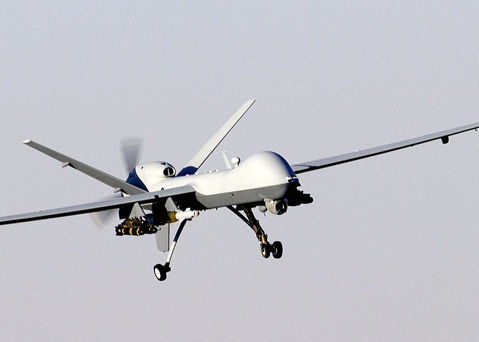The Duality of Hope
Obama Has Better Options Than Expanding Unmanned Drone War

Greg Mortensen attempted to climb K2 in 1993, one of the highest and most dangerous mountains in the world. He failed and almost died in the process. Stumbling down from the mountain, he was rescued by impoverished Pakistani villagers who nursed him back to health despite their meager means. Mortensen was so inspired by his benefactors that he wrote a book about his experience, Three Cups of Tea, and started a non-profit organization upon his return to the U.S. His organization has now built over 130 schools in Pakistan, Afghanistan, Kyrgyzstan, and Mongolia.
Mortensen’s Central Asia Institute is among the ranks of hundreds of thousands of “non-governmental organizations” (NGOs) that have sprung up around the world over the last century. NGOs are more commonly called “non-profit organizations” or “civil society.” The Salvation Army is an NGO, as is the Sierra Club. This sector of our society, still little understood by most people, collectively forms the eighth largest economy in the world, employs over 19 million people, and spends more on international development than the World Bank. It is clearly a major force for change.
The NGO sector played a major role in the various “color revolutions” over the last decade, including those in Serbia, Georgia, Kyrgyzstan, and Ukraine, and many other less high-profile movements. These movements, so named because they adopted a color or a flower for a name, advocated non-violent protest against authoritarian governments. They actually succeeded in many cases in unseating the leaders that aroused public anger and protest. Gandhi’s non-violent ouster of the British from India in 1948 was, of course, the model for these more recent revolutions.
A similar movement in Kuwait in 2005, dubbed the “Blue Revolution,” led to women being allowed to vote. And Iran’s ongoing “Green Revolution” may eventually lead to another toppling, following the pattern of the 1979 revolution that removed the U.S.-backed Shah Mohammed Reza Pahlavi in that country.
Contrast these successful non-violent movements with the other end of the spectrum. Despite President Obama’s promising new tone on foreign policy, his administration, in a move that rivals the aggressiveness of the Bush administration, has threatened to expand its unmanned drone attacks into the heart of Quetta, a Pakistani city of 850,000. The new administration has already expanded this program dramatically in Afghanistan, Pakistan, and Iraq. The CIA, as we know from a leak made public in early December and reported by the Los Angeles Times, talked about extending drone attacks into Quetta so as to put more pressure on the Pakistani government to go after Taliban militants the U.S. believes are hiding in Quetta.
Drones are robot airplanes guided by human “pilots” who literally sit in the U.S. and wage war by video game remote control. There is no accountability for people and infrastructure hit by drones because there is generally no one on the ground to verify what was hit. The CIA claims it has killed ten major Al Qaeda leaders in the last year with this program. But who could possibly verify such claims? More importantly, how many innocent civilians were killed in the process? And what is the moral distinction between these sloppy accidents and active targeting of civilians?
Obama is waging a Bush-style “preventive war” in Pakistan. Preemptive war, in which one nation launches an attack because it knows with certainty that it is about to be attacked, actually has some precedent in international law and is not considered automatically illegal. Preventive war, however, in which military action is taken without an imminent threat from the targeted country, is patently illegal, which was why so many nations objected to the preventive war Bush waged in Iraq.
Pakistan has repeatedly objected to U.S. military/CIA actions within its borders, publicly labeling such actions a violation of its sovereignty (despite apparent acquiescence to many other aspects of U.S. military action in Pakistan). In response to the CIA’s threat to expand the illegal drone program into Quetta, a Pakistani official stated: “We are not a banana republic.”
So why does the U.S. political and military establishment persist on this aggressive course? Two books that suggest some answers are Andrew Bacevich’s The New American Militarism and Ismael Hossein-Zadeh’s The Political Economy of U.S. Militarism. Both authors follow the thread laid down originally by President Dwight David Eisenhower when he left office in 1961, warning strongly against the “military/industrial complex” that maintained a stranglehold on the U.S. political system.
Given the proven track record of the color revolutions, waged with major NGO support, many of which are funded by the U.S. and other Western nations, what is the wiser and more humane course of action in Pakistan and other problem nations?
Don’t we, after all, live in a democracy governed by the people and for the people? Or do we do live in a different system, in which Eisenhower’s military/industrial complex still holds sway even under an ostensibly progressive president?



